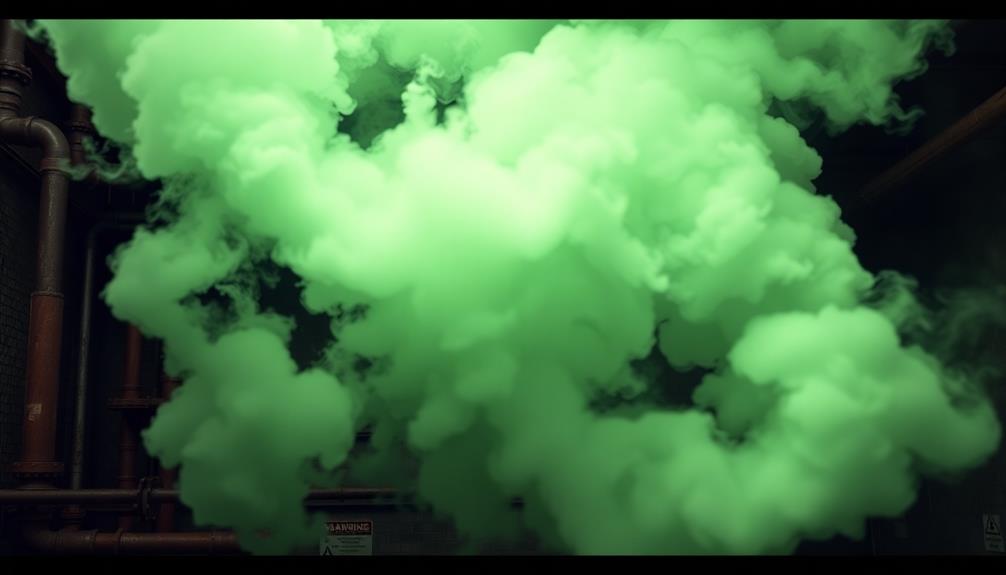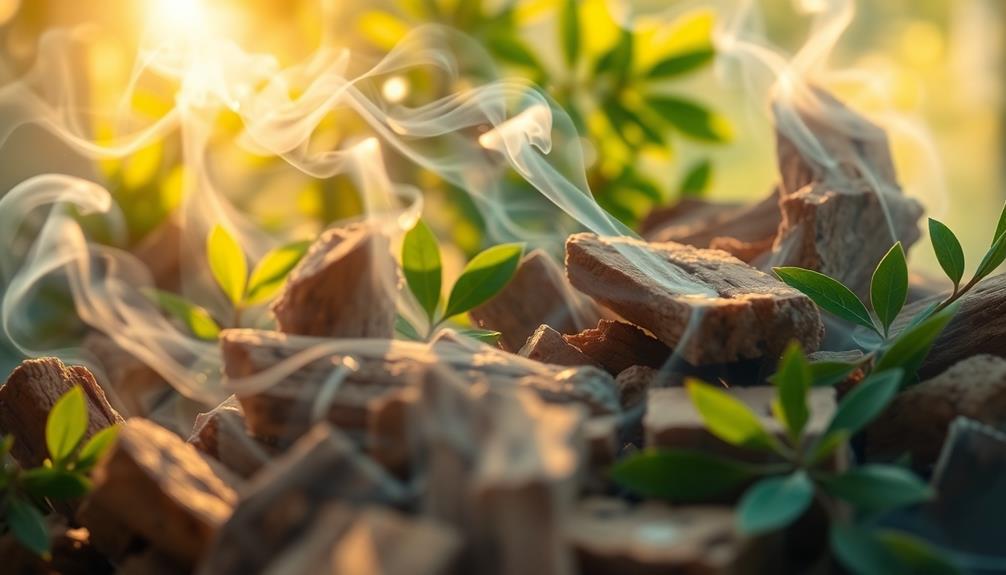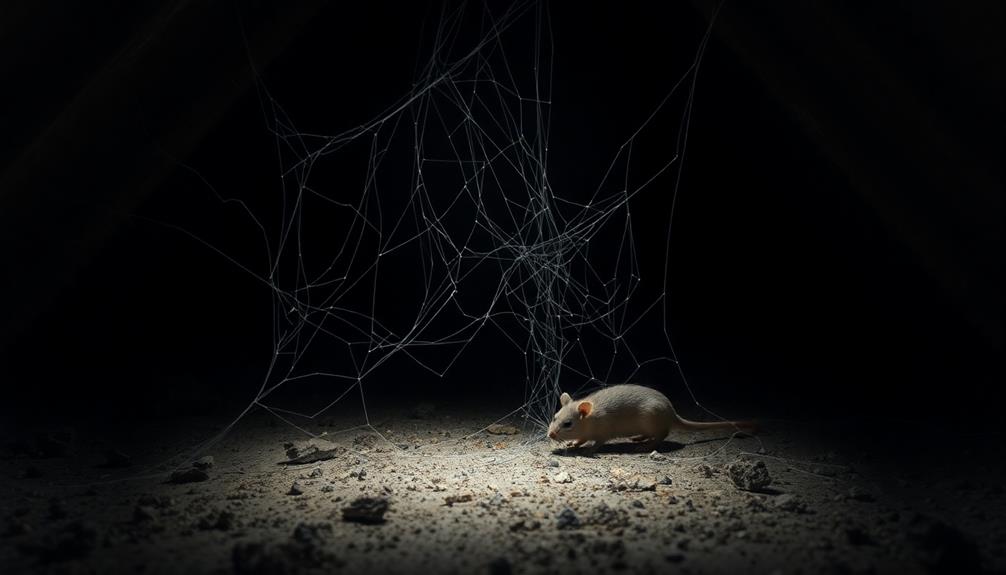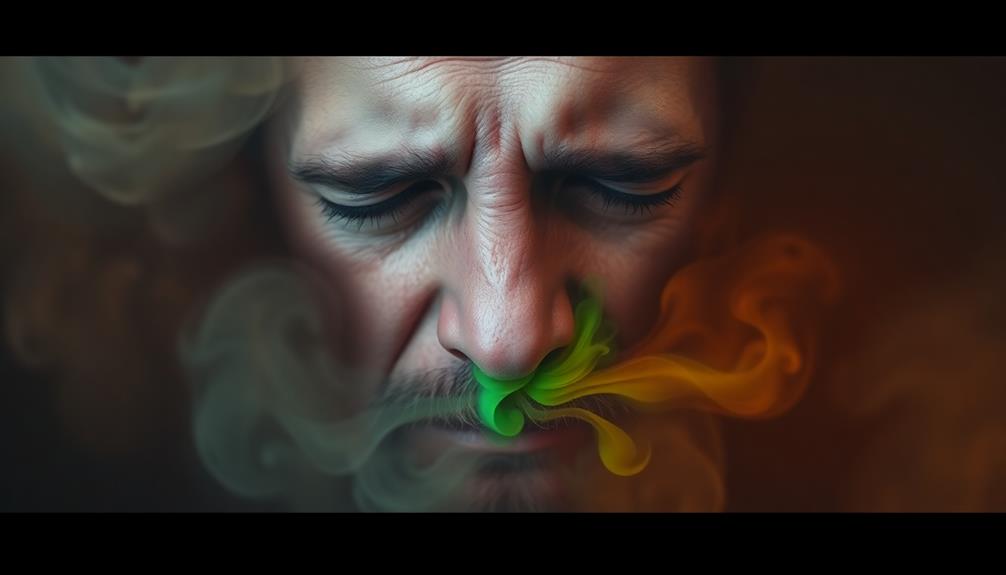Chlorine gas has a strong, sharp smell that's often compared to ammonia or bleach. You'll notice it easily, especially around places like water treatment plants or pools. This yellow-green gas is a warning sign, so be cautious! When you breathe it in, it can irritate your eyes, nose, and throat. Now, while some people might associate that smell with fun summer days at the pool, it's important to stay safe around it. If you catch a whiff of chlorine gas, it's best to leave the area quickly. You'll discover plenty more useful info about its effects and safety!
Key Takeaways
- Chlorine gas has a strong, pungent odor that resembles ammonia or bleach.
- Its yellow-green color indicates higher concentrations of chlorine gas in the environment.
- The smell serves as a warning for potential hazards, particularly in enclosed spaces.
- Exposure can cause irritation in the eyes, nose, and throat, leading to coughing and shortness of breath.
- Repeated exposure may reduce sensitivity to the odor, making it harder to detect.
Introduction
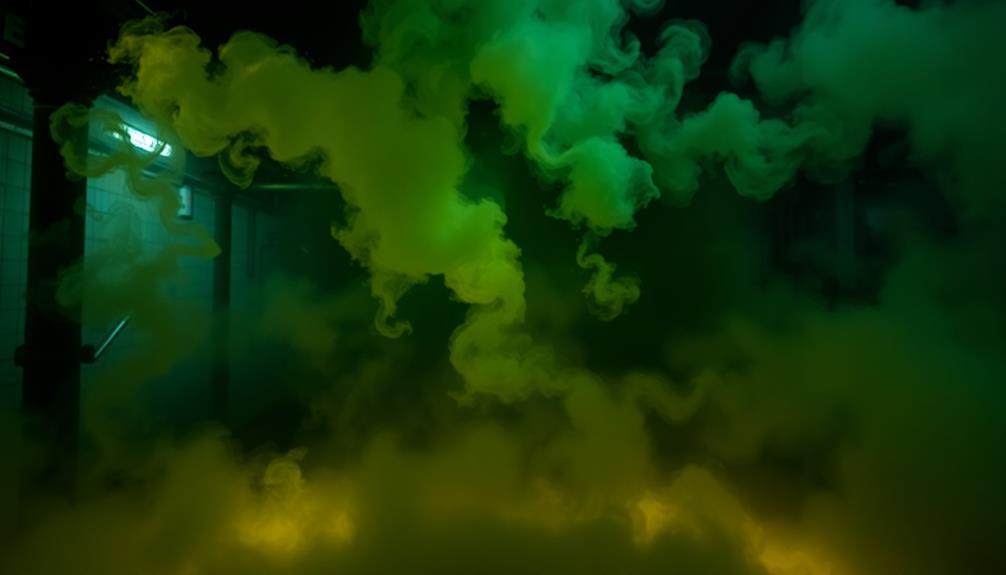
Have you ever noticed that strong, pungent smell in a pool or near cleaning supplies? That's the recognizable chlorine gas smell! It's often compared to ammonia or bleach and can really hit your nose. This strong odor comes from chlorine's chemical properties, which make it easy to identify even in low concentrations.
When you're around chlorine gas, you might experience some irritation, especially in your eyes or respiratory tract. It often feels like a burning sensation, which isn't pleasant at all.
While swimming pools have a milder chlorinated smell, that's mainly due to chloramines forming when chlorine interacts with organic matter.
If you ever see a yellow-green color, that can mean there's a higher concentration of chlorine gas nearby. It's a good idea to be cautious, as exposure to this gas can be harmful.
Knowing how to recognize the strong odor of chlorine gas is essential for your safety. If you notice that smell, make sure to move to a well-ventilated area or seek help if it gets too intense. Stay safe and keep your senses sharp!
Description of the Smell
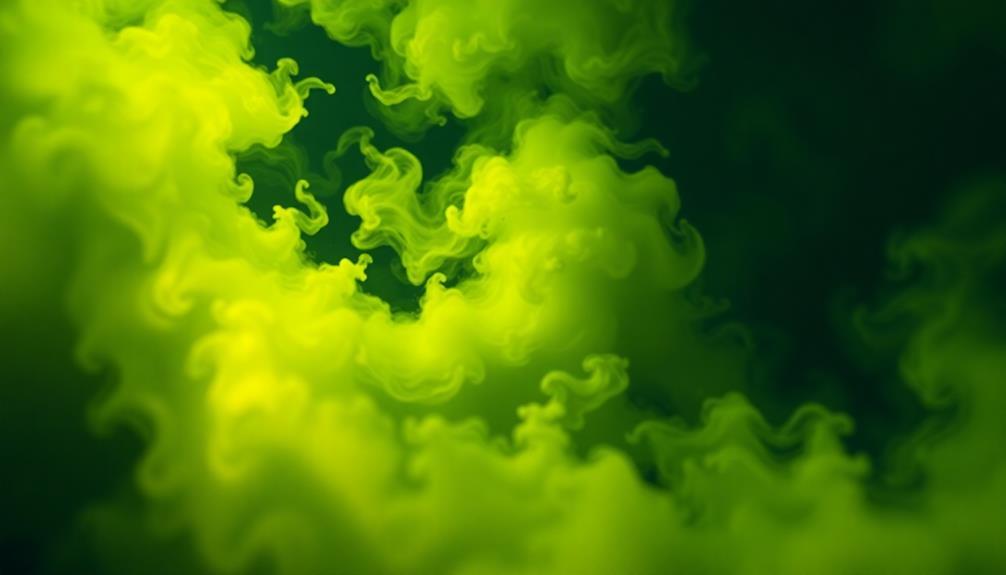
Chlorine gas carries a strong, unpleasant odor that's hard to miss. When you first catch a whiff, you might think of ammonia or bleach. This distinctive smell comes from chlorine gas's high reactivity, especially when it reacts with water. It creates chloramines, which is why you often notice that smell in swimming pools.
However, the odor of chlorine gas is much more intense and can be quite irritating. If you're exposed to chlorine gas, you may experience respiratory discomfort. The irritating odor can cause your eyes to sting and make it hard to breathe. At higher concentrations, the smell becomes overwhelming, leading to coughing and throat irritation.
It's important to pay attention to this smell. If you notice it, you should move to an area with fresh air right away. Always be cautious, as the yellow-green color of chlorine gas can help you identify its presence.
Together with the strong smell, this color serves as a warning. Remember, whenever you encounter this unpleasant odor, it's best to take it seriously and prioritize your safety.
Source and Composition
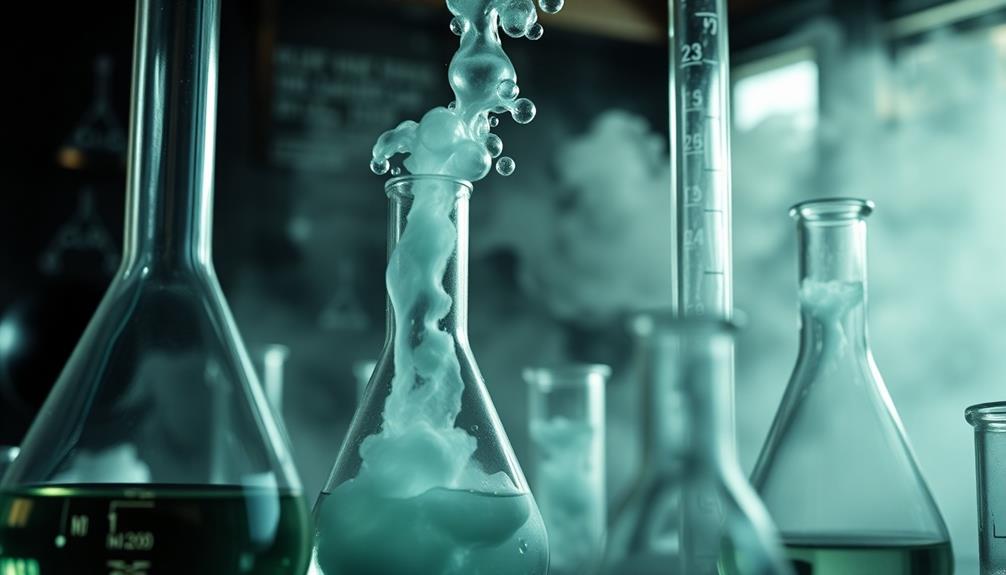
The source of chlorine gas primarily comes from industrial processes, particularly those involved in water treatment and chemical manufacturing. This yellowish-green gas has a strong, unpleasant odor that many people find similar to ammonia or bleach. You can usually spot chlorine gas by its distinctive smell, which is a helpful warning of potential leaks.
Chlorine is highly soluble in water, which means it easily mixes with it. When chlorine gas comes into contact with water, it reacts to form hypochlorite. This compound is commonly used in sanitation processes, making it an important part of keeping our water clean and safe.
It's interesting to note that the characteristic scent of chlorine differs from the smell you might notice at a chlorinated pool. This difference is due to varying concentration levels and the presence of chloramines, which form when chlorine bonds with bacteria.
While the odor of chlorine gas serves as an early warning for potential leaks, be careful! Repeated exposure can diminish your sensitivity to the smell, making it harder to detect.
Always stay alert when you're around chlorine to ensure your safety!
Typical Scenarios or Environments

In various environments, the presence of chlorine gas can be particularly pronounced, especially in places where it's actively used for sanitation or chemical processes.
You might notice a strong, unpleasant odor in locations like water treatment plants or manufacturing firms. These industries often handle chlorine, which can create a noticeable smell.
In enclosed spaces, such as basements or poorly ventilated areas, the odor can become even more intense. If there's a chlorine gas leak, you'll want to be extra cautious, as the distinctive yellow-green color of chlorine gas serves as a critical warning sign.
This color, along with its strong smell, makes it relatively easy to identify potential dangers.
Interestingly, in swimming pools, you won't smell the same chlorine gas. Instead, the odor comes from chloramines, which form when chlorine interacts with bacteria.
While this smell is still strong, it's different from what you'd encounter in a leak.
Emotional or Cultural Associations

Memories often intertwine with the strong smell of chlorine, shaping both emotional responses and cultural associations. For many, the scent of chlorine gas brings back joyful moments spent at swimming pools, where laughter and splashing water create a sense of fun and relaxation.
It's a smell that signifies cleanliness and sanitation, reminding you of the efforts made to keep public spaces safe and enjoyable.
However, not everyone has positive feelings toward this distinctive odor. Some people might recall negative experiences, like eye irritation or respiratory discomfort, leading to emotional responses that lean toward anxiety.
This recognition of chlorine as a hazardous substance adds a layer of caution, reminding you of the safety protocols in place at pools and other facilities.
Despite these mixed feelings, chlorine's smell often symbolizes the excitement of summer and leisure activities. It evokes memories of swimming lessons, pool parties, and family vacations.
Health or Safety Considerations

Chlorine's strong odor, often tied to fond memories of summer fun, serves as a critical warning sign for potential health risks. When you catch that distinctive odor, it's time to be cautious. Inhaling chlorine gas can cause immediate irritation, making your eyes, nose, and throat feel uncomfortable. You might experience coughing, shortness of breath, or a burning sensation, which is your body's way of telling you to get away from the source.
If you're exposed to high concentrations of chlorine gas, the health risks increase significantly. Severe effects, like lung damage and pulmonary edema, can occur, and you'll need medical attention right away. Prolonged exposure can lead to chronic respiratory issues, and even burns on your skin and eyes.
To protect yourself, always be aware of your surroundings. Regular monitoring for leaks is essential, and if you smell that strong chlorine odor, evacuate the area swiftly.
Final Thoughts
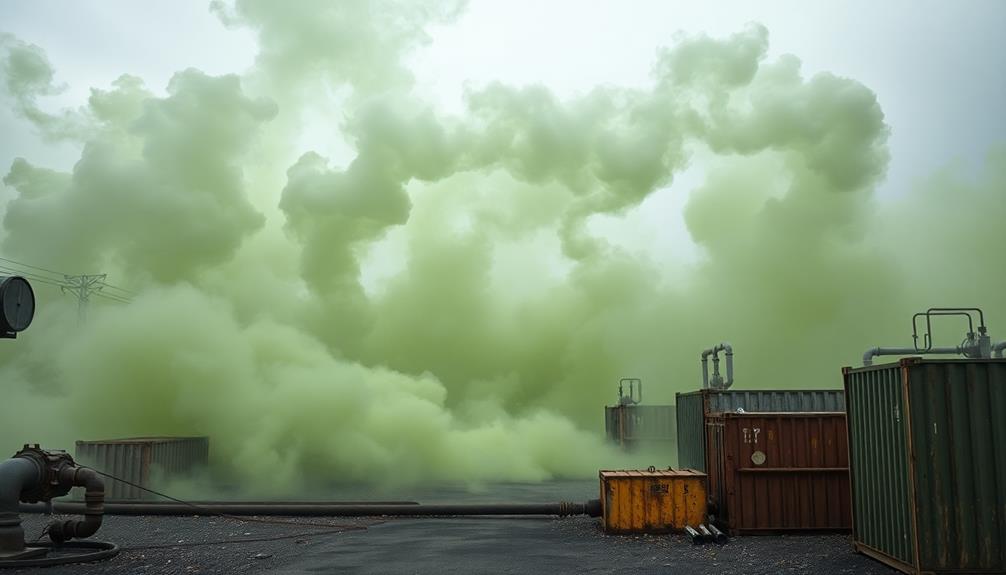
The strong smell of chlorine gas is more than just a nostalgic reminder of summer; it's a vital signal for safety. When you catch a whiff of that unpleasant odor, it's essential to take it seriously. Chlorine gas has a strong scent, often compared to ammonia or bleach, making it easy to identify. This smell warns you of possible leaks and helps keep you safe. Monitoring for other potentially hazardous gases is equally important. For instance, methane gas odor characteristics are quite different from chlorine, often described as earthy or similar to rotten eggs when combined with odorants for detection. Paying attention to these distinct smells can help you quickly recognize the presence of dangerous gases and take appropriate action.
If you're exposed to chlorine gas, you might experience irritation in your eyes and respiratory system. That's why it's crucial to act quickly if you notice that pungent odor. Remember, while the yellow-green color of chlorine gas can aid in identification, the smell is your first line of defense.
Always be aware of your surroundings, especially in places where chlorine is used, like swimming pools or cleaning areas. Prolonged exposure can lead to serious health effects, so don't ignore that warning signal.
Frequently Asked Questions
How Do You Know if You Have Chlorine Gas?
You'll know you have chlorine gas if you notice a strong, unpleasant odor, see a yellow-green cloud, or experience symptoms like eye irritation, throat burning, or difficulty breathing. Seek immediate help if these occur.
What Does Chlorine Smell Like in the Air?
When you're in an area with chlorine gas, you'll notice a sharp, pungent odor that can remind you of cleaning products. It's crucial to recognize this scent, as it signals potential danger and health risks.
How Long Does It Take to Air Out Chlorine Gas?
It varies, but in larger spaces, chlorine gas dilutes quickly, allowing for safer air quality to return over time. In smaller areas, you'll need proper ventilation to clear the gas effectively and ensure safety.
Can You See Chlorine Gas in the Air?
Yes, you can see chlorine gas in the air as a yellow-green cloud. Its visibility depends on environmental conditions, but you should always rely on its strong odor for early detection and safety.
